SPECIAL INSTRUCTIONS
The remaining Part1 questions are associated with four case studies that describe various environments or settings. Each case study appears on its own display screen. Questions for each case study will appear on separate display screens.
When displaying a question, you can easily review the related case study by clicking on the “Review Case Study” icon shown below:
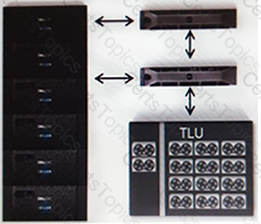
Case Study 5 – Refer to the Exhibit.
Backing up data from a Dell EMC Isilon cluster exceeds the company’s backup window. Because the company has a large amount of data with a continuous high growth rate, they want to change their backup strategy. The Gen 6 Isilon cluster consists of 24 nodes.
Their current backup strategy is an NDMP three-way backup performing weekly full backups to tape and incremental backups each night. The strategy uses Dell EMC NetWorker. The DMA uses Include paths to specify what data to backup. All data on the cluster must remain accessible.
The company’s IT team is now looking for a method to increase the performance of their backups. After some investigation, you notice that the backup job targets two paths. This could be the cause of the lengthy backup times.
What advice should be provided to the team?
An IT team is implementing a disaster recovery solution. A Dell EMC Isilon cluster will replicate production data from the existing primary cluster to a planned secondary cluster. The primary cluster is licensed for SmartLock Enterprise whereas the secondary cluster is not.
A SmartLock enterprise type directory on the primary cluster is planned for replication. SyncIQ is used to replicate the data. What is a key consideration when replacing the WORM domain?
A Dell EMC Isilon cluster is configured with multiple 10Gb connections. Clients connect to the cluster using high speed links through a routed network. The cluster is configured with SmartConnect zones and servers NFSv3 clients. Network traffic and speeds appear steady. However, the administrator wants to ensure the cluster network performance is optimal.
What can help optimize network performance in this environment?
A company has two Dell EMC Isilon clusters. The source cluster is running OneFS 8.0.x and the target cluster is running OneFS 7.2.x with replication policies configured from the source to the target cluster. OneFS will not be upgraded on the target cluster.
After some time, the company decided to archive some of the data to ECS using CloudPools. One of the company’s concerns is how the archived data will be replicated using the existing SyncIQ policies. What is recommended approach to address the company’s concerns?
The :”nfs2” file system has been experiencing delays that have been impacting the entire Dell EMC Isilon cluster. Neither Snapshots nor SyncIQ is configured for these directories. Use the “Launch Simulator” button to verify the SSD strategy. Note: It is necessary to ‘close’ (x) the simulator window to answer the question.
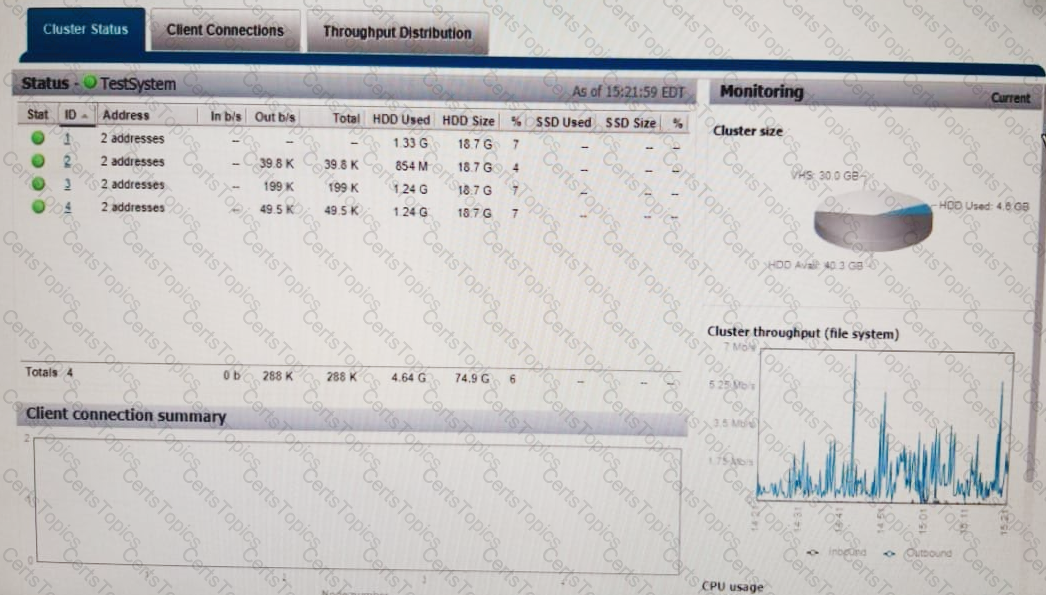
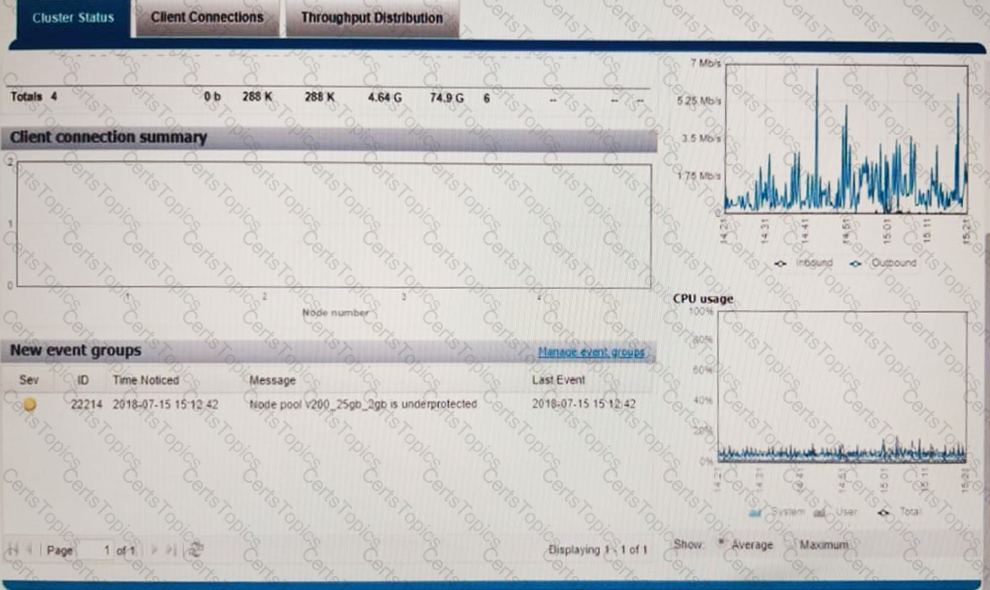
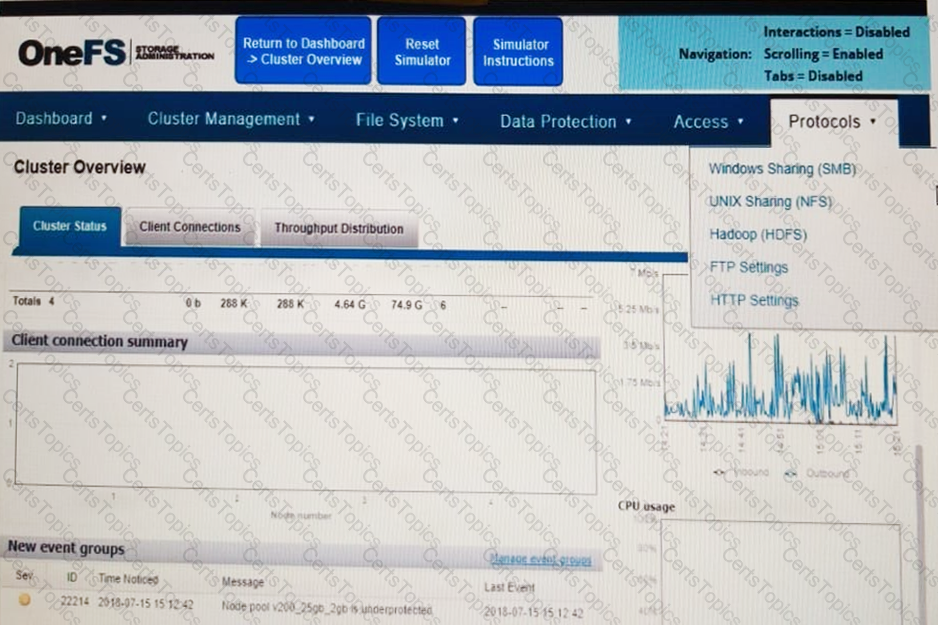
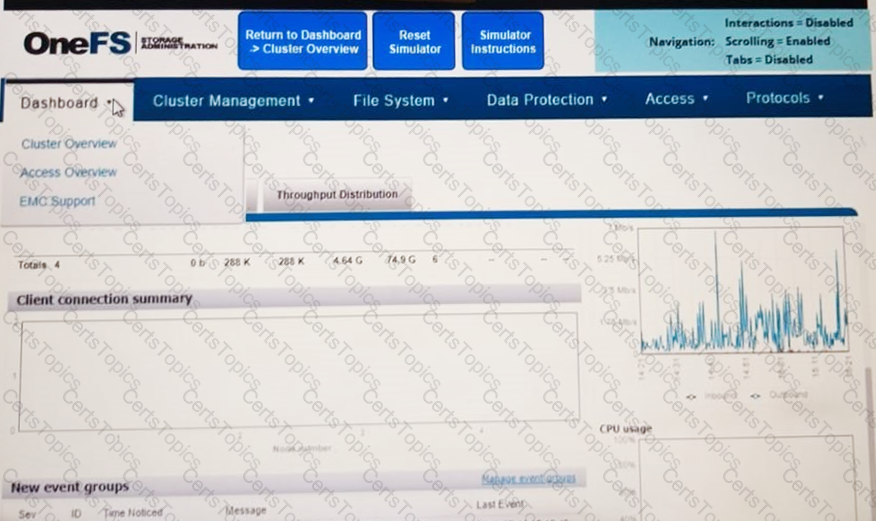
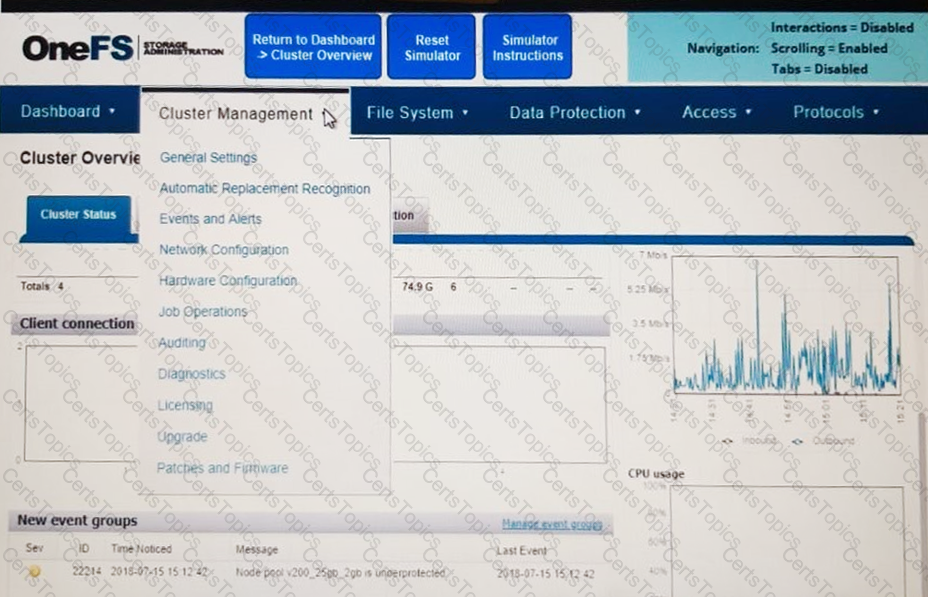
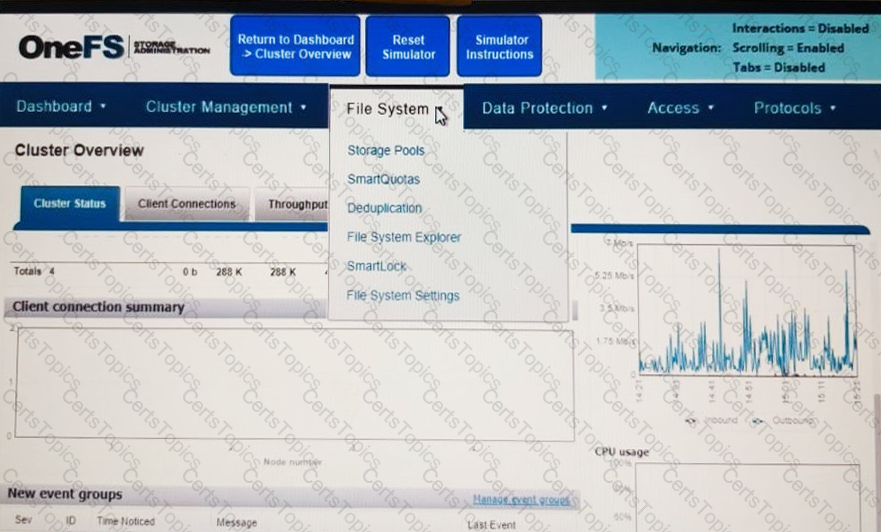
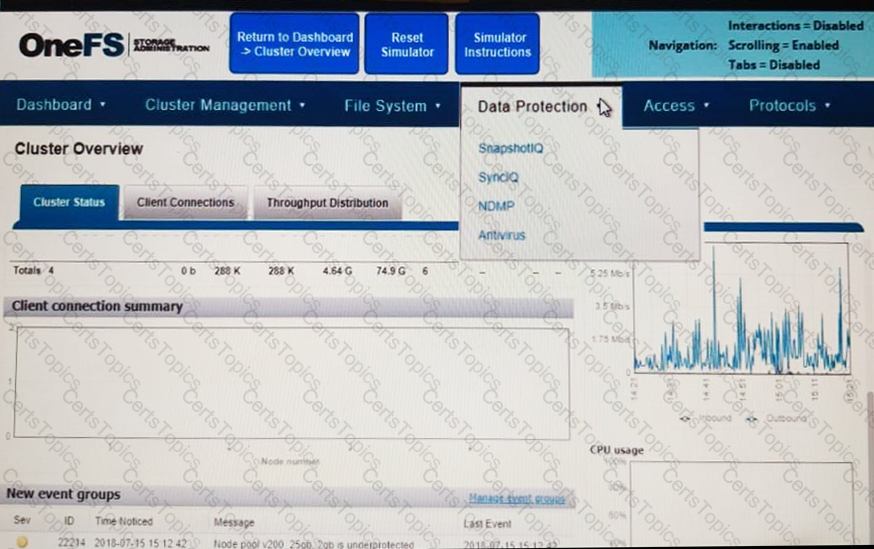
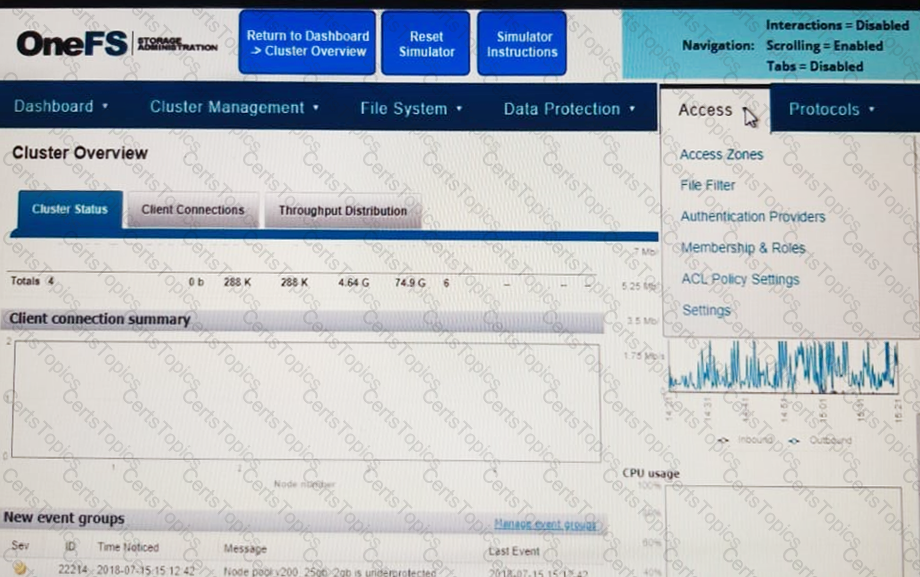
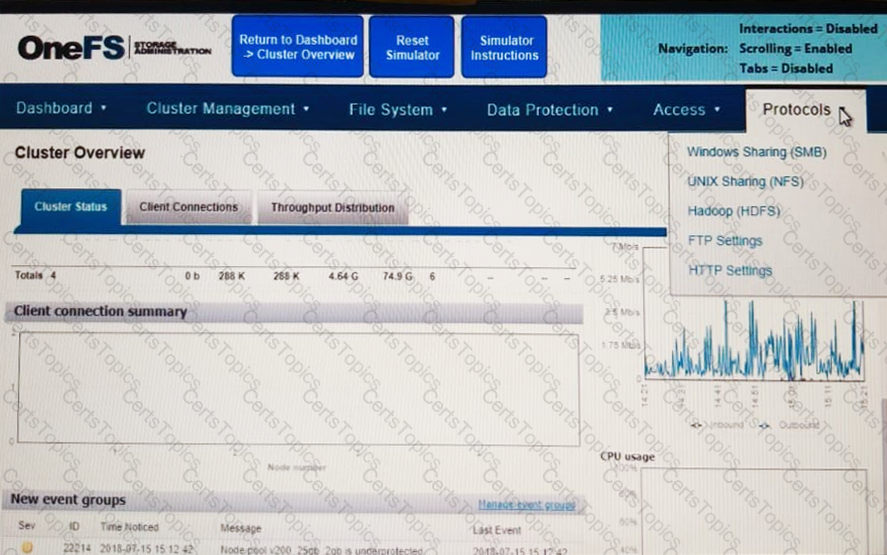
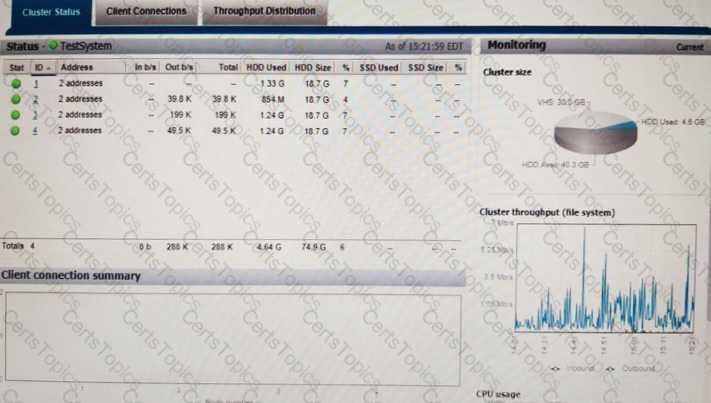
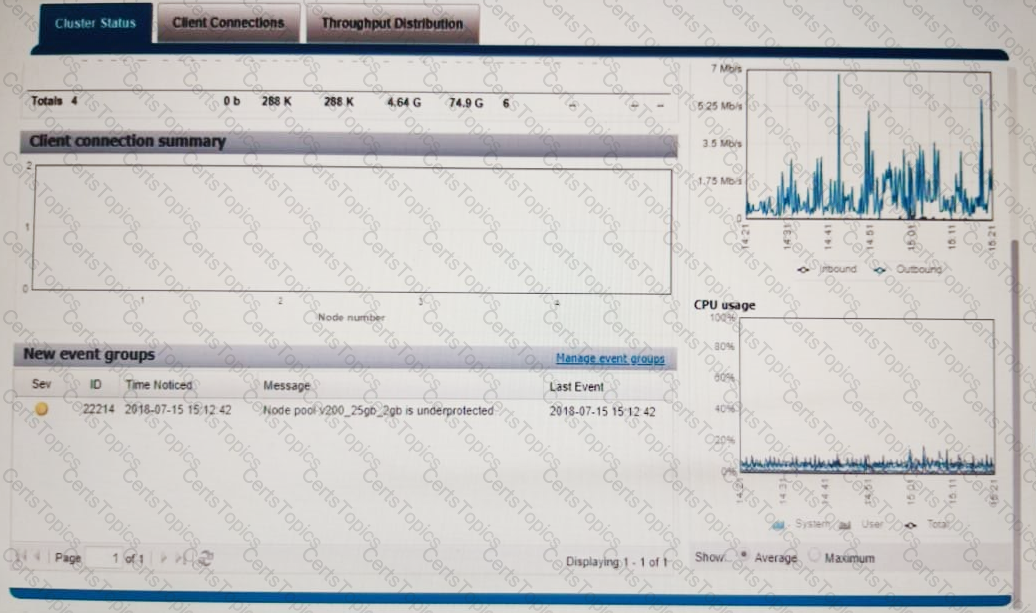
Based on your findings, which operation should be performed to address the delays?
Case Study 4
A company is experiencing a noticeable decrease in performance when accessing data on their Dell EMC Isilon cluster. The cluster hosts Microsoft Windows home directories and general purpose file shares. In addition, a file pool policy moves data that has not been modified in six months to an achieve tier. The administrator wants your assistance in understanding the reason for the slow data access. The number of users accessing the cluster has not changed. The administrator has shared the following baseline metrics. The outputs were captured from a performance- acceptable time frame.
Trace route shows:
-3 hops between clients and the cluster
-Average latency is 3 ms
Iperf shows:
-940 Mb/s average bandwidth
-005 ms average jitter
Netstat on the local network shows:
-05% average re-transmission rate
Hostcache list:
-20 ms average roundtrip time across all clients
The administrator shows you the following iperf output:
-890 Mb/s average bandwidth
-98.8 ms average jitter
Based on the output, what information should be provided to the administrator?
A company is migrating files from a third-party storage platform that is authenticated through AD. The migration tool being used is Dell EMC “EMCOPY.exe” running on a separate Microsoft Windows host. In order to run the EMCopy process and complete the migration, which type of account is required?
A company has purchased a new Dell EMC Isilon cluster as a disaster recovery solution and plans to use SyncIQ. SBR is not currently enabled. The systems administrator has asked for advice about how to configure the network connectivity for the replication traffic.
What are Dell EMC recommendations for a replication network configuration?